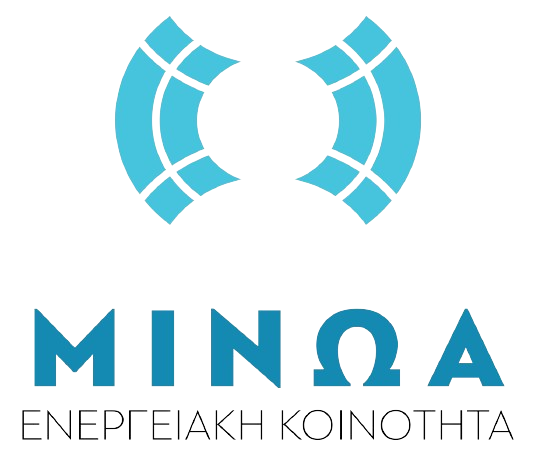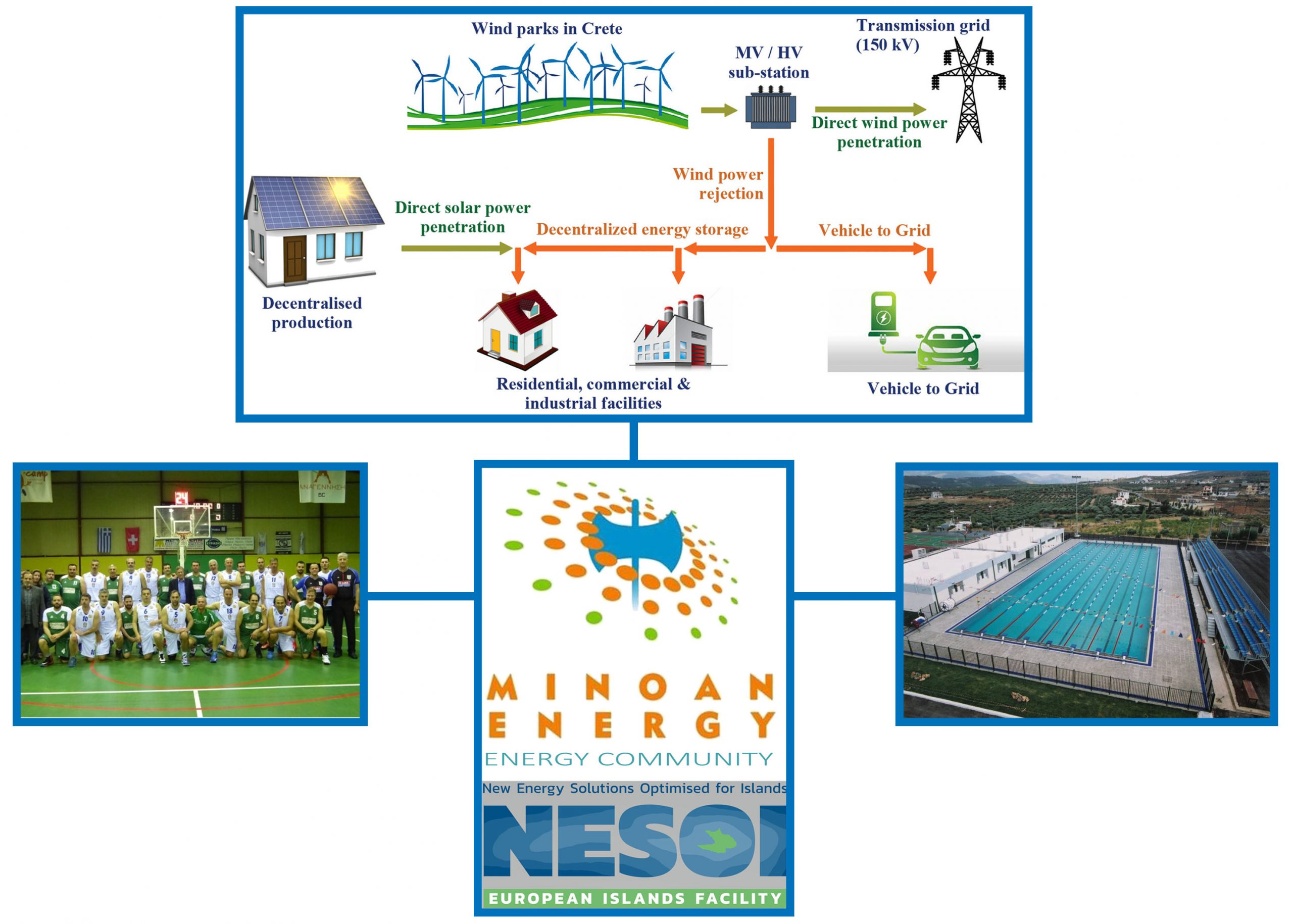The project Sustainable Actions for Viable Energy (SAVE) is funded by the Horizon 2020 project New Energy Solutions Optimised for Islands (NESOI) του Horizon 2020. The main tasks of the SAVE project are:
- the design of the technical solution, including geographical topology, for a smart grid within the geographical boundaries of the three Municipalities which had already become members of the Community at the moment of the proposal’s submission (Municipalities of Minoa Pediadas, Archanon Asterousion and Viannou)
- the final studies for the implementation of energy performance upgrade measures of the Municipal Sports Centre and the Indoor Sports Hall of Arkalochori.
The smart grid will be designed, at a first stage, for the involvement of 200 electricity final consumers, who will gain access to several Demand Side Management (DSM) strategies, such as the decentralized electricity production and storage, the load shifting towards low demand periods, the direct electricity transaction with other final users etc. The aim of the smart grid is the support of the insular grid during peak demand periods, the increase of the active involvement of the local citizens in the electricity production and management, the drop of the electricity production cost and the remedy of energy poverty.
The Minoa Pediadas Municipality sports facilities under consideration are the Municipal Sports Centre, which includes the swimming pools, the 5 x 5 football grounds, the tennis and the basketball courts, as well as the Indoor Sports Hall, all of them located in Arkalochori. For these two projects, full energy performance upgrade studies will be delivered to the Municipality, fully prepared for the post of the open tender for the projects’ implementation. With the application of the appropriate active and passive measures, these two sports facilities will be upgraded to “zero energy facilities”. Comprehensively, the proposed interventions are:
a. For the Municipal Sports Centre:
- The construction of an enclosure for both swimming pools (olympic size and training pool), aiming to minimize the required heating load.
- Installation of a floating insulation cover on the free surfaces of the swimming pools, to reduce the heating loads when they are not used.
- Installation of heat production active systems, based on renewable energy sources (RES) for the swimming pools heating and the production of hot water for final use in the changing rooms. Such systems can be solar collectors, a biomass heat and heat pumps based on geoexchange.
- Installation of new pumps and pipelines in the swimming pools hydraulic circulation network, aiming to increase the overall efficiency of the hydraulic infrastructure and reduce the total head of the pumping station.
- Passive measures for the minimization of the indoor space heating and cooling load of the swimming pools’ building (insulation of opaque surfaces, replacement of existing openings).
- Installation of new indoor space active conditioning systems for the swimming pools’ building.
- Replacement of the old and inefficient incandescent and fluoroscent lighting lamps with new LED devices, supported with new lighting fixtures with reflectors.
- Replacement of outdoor incandescent floodlights of the football, basketballs and tennis courts.
- Installation of a photovoltaic station for the compensation of the annual electricity consumption of the overall facility, under net-metering operation.
- Installation of a Building Energy Management System (BΕMS) for the electronic management of all the energy consumptions in the Sports Centre regarding the swimming pools heating, indoor space conditioning, the hot water production and the indoor and outdoor space lighting.
b. For the Indoor Sports Hall:
- Replacement of all openings in the Sports Hall with new ones, aiming to achieve a total U-factor lower than 1 W/m2K.
- Replacement of the existing roof with a new from modular stone wool ceiling panels.
- Installation of polystyrene insulation for all the concrete vertical walls of the building.
- Replacement of all the damaged polycarbonate panels of the main sports hall with stone wool wall panels.
- Installation of new windows along the long sides of the main sports hall.
- Installation of new indoor space conditioning active system (heat pump).
- Installation of a new solar collectors – heat storage tank system for the production of hot water for final use in the changing rooms.
- Replacement of all existing inefficient incandescent and fluorescent lighting bulbs and floodlights both for the main sports hall and the auxiliary rooms (offices, changing rooms etc).
- Installation of solar light tubes in the main sports hall, to maximise the physical lighting of the space and compensate the removal of the existing semi-transparent polycarbonate panels with opaque stone wool wall panels.
- Installation of a photovoltaic station for the compensation of the annual electricity consumption of the overall facility, under net-metering operation.
- Installation of a Building Energy Management System (BΕMS) for the electronic management of all the energy consumptions in the Indoor Sports Hall regarding the indoor space conditioning, the hot water production and the indoor and outdoor space lighting.
The SAVE project started on July 2021 and will be integrated within one year
Relevant link: https://www.nesoi.eu/system/files/private/nesoi/Briefs/nesoi_z056_save_brief.pdf
In the following videos you can see:


